Like most kids his age, thirteen-year-old Luke Thill of Dubuque, Iowa, would tinker on his computer–playing games, communicating, or searching for bits of information on the web. He mostly did so because he had a lot of time on his hands, lived in a relatively slow-paced environment, and because the online world seemed one big playground to a young boy.
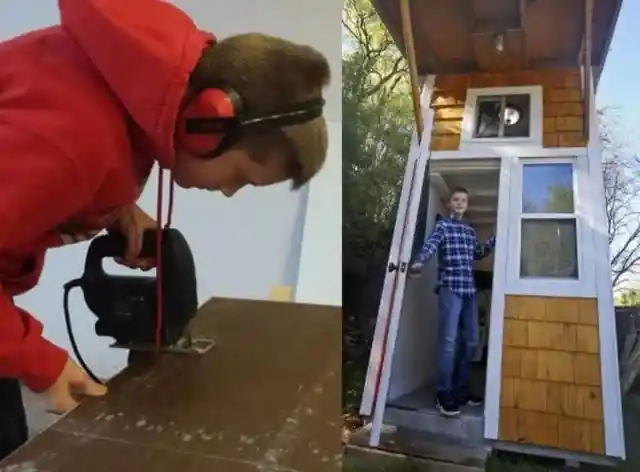
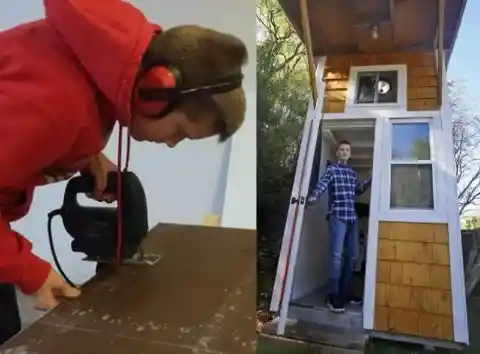
Then one day, Luke stumbled upon the concept of building tiny homes on Youtube. This discovery lit the match of his imagination, later engrossing him in a project that would separate him from his ordinary youthful counterparts.
Read on to find out how this kid built his very own tiny home!
Aim For Bigger Things
An 89-square-foot house is not exactly your typical definition of something big, but for a kid like Luke, this was the world to him. This “tiny home” was bigger than just its size. While most boys his age were holed up inside their bedrooms, consumed by their Playstations, Luke had already given that up for the next level of happiness.
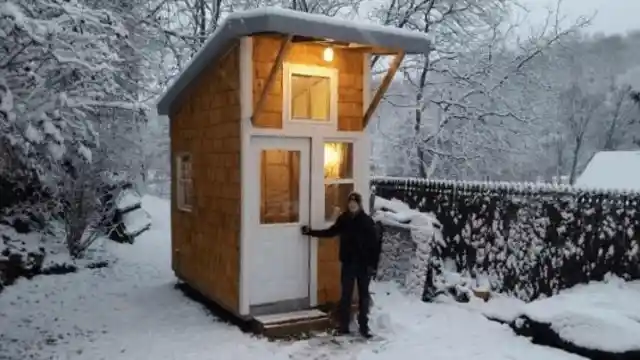
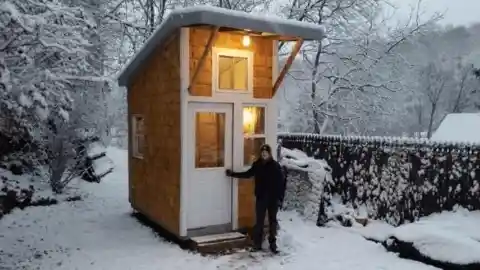
He was voluntarily transitioning into a mature adult mindset years ahead of his peers. The notion was playful, but it also entailed a lot of responsibilities and obligations–weighty at the same time.
New Obsession
A short video Luke accidentally stumbled upon about tiny homes on Youtube expanded his imagination on the possibility of the things that he could do. It was a window into something inventive, a newly discovered micro world that beckoned to his curiosity.
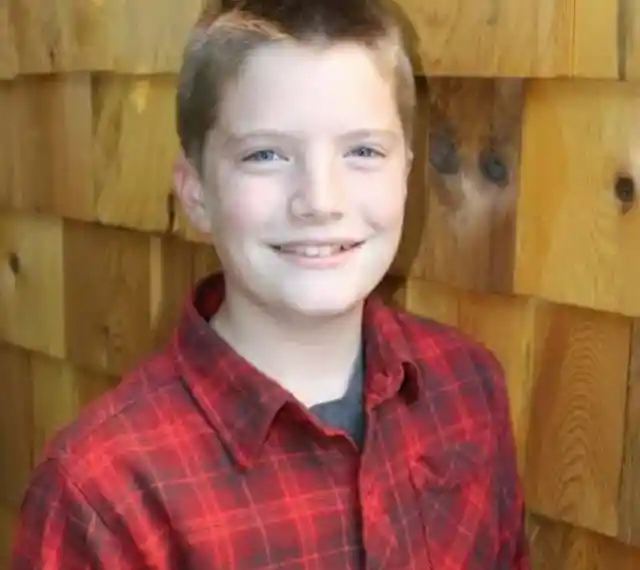
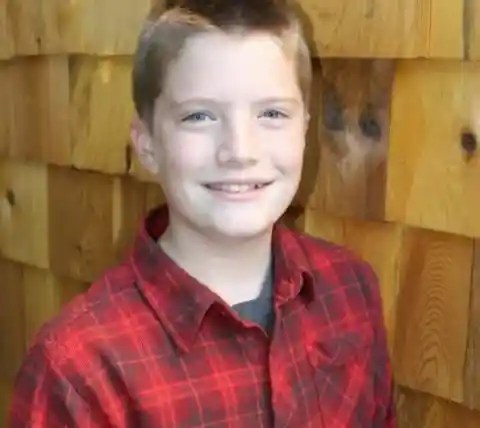
Luke could not stop searching the world wide web for more information about the subject. He watched more related videos on Youtube, read about them as much as he could, and became “obsessed with them,” to the point where he knew he had to build one for himself.
Kid Extraordinaire
In those hours spent tapping away at the keyboard of his computer–for days and nights–he was transported onto another plane. His life was transitioning, changing faster every minute as if the bytes he had downloaded from his computer had spread to his veins, converting him into a new entity. A kid extraordinaire.
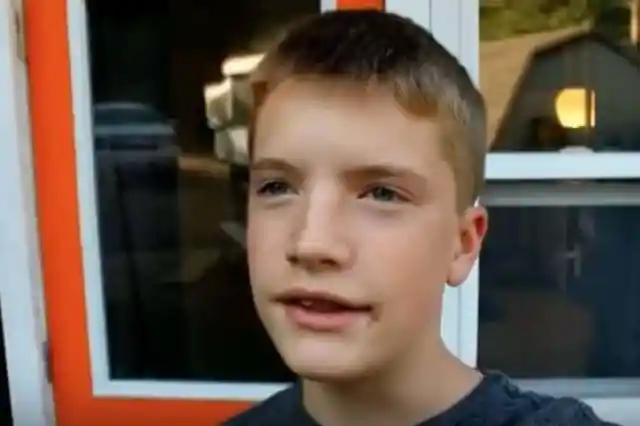
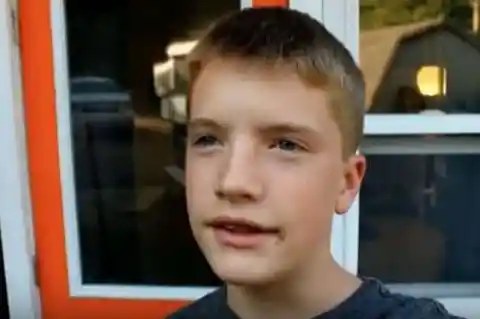
That summer, Luke would change. Life was about to be hectic. The small desk in his room would need to be cleared to make way for new planning documents, adultlike goals, and the courage he would need to outmaneuver impending challenges.
Conferring With His Parents
As soon as Luke collected a substantial amount of information about this housing project, he got up from his computer table and knew he had to have a straight talk with his parents. But first, he paused to reevaluate this thing in his head that was bugging him–was he mad to be up to something no kid had ever thought to do before?
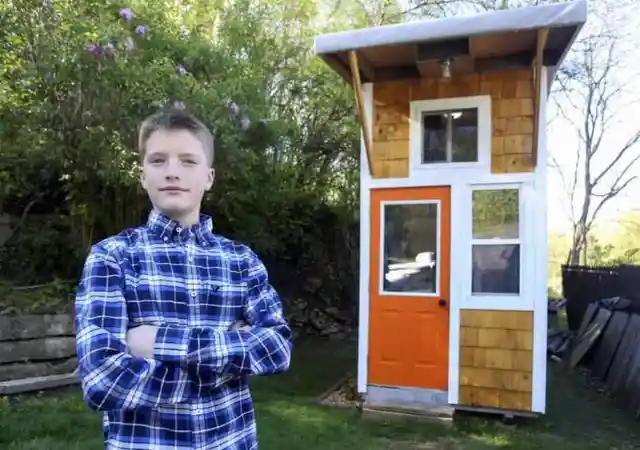
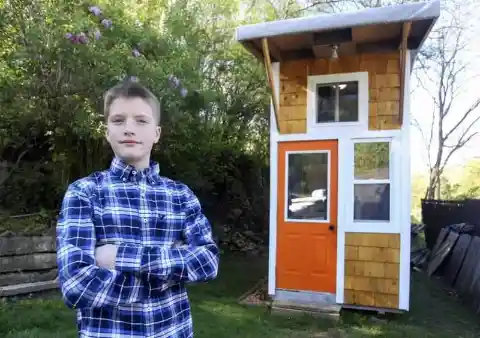
His mom and dad were pleasantly surprised by their son’s unusual interest and offered him their invaluable support. They agreed to let him build his micro house in their yard, just outside their window, like he was their future boy-next-door neighbor.
Laying Down The Rules
Luke’s parents knew that what they were dealing with was potentially life-changing. It was a project that could lift their son’s perspective toward life or hurt him if it failed. So the first thing they did when granting him permission to build was to lay down the rules for him to abide by.
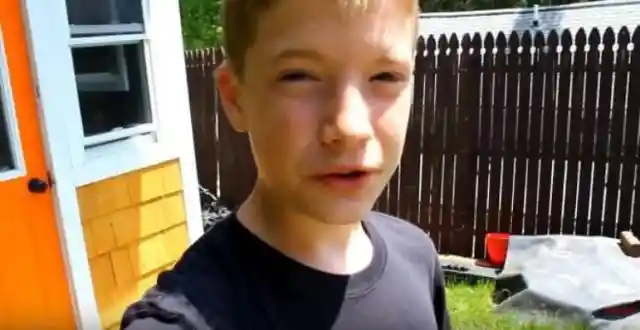
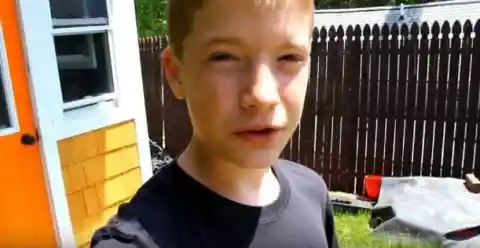
His father, Greg, told him that such an endeavor entailed a lot of necessary expenses, and Luke would have to find a way to become financially responsible. They both discussed the many possible ways he could raise enough funds for it.
Learning From The Experience
As much as Greg Thill wanted to help his son in this major venture–he could have easily provided him with the money and offered his carpentering skills to hasten its completion–he knew limitations had to be put in place.
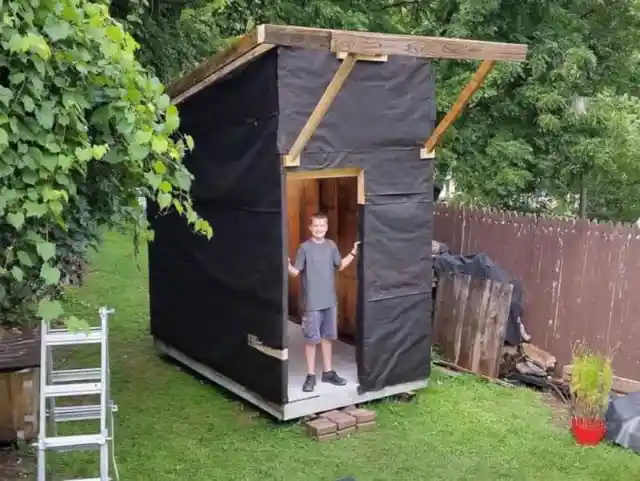
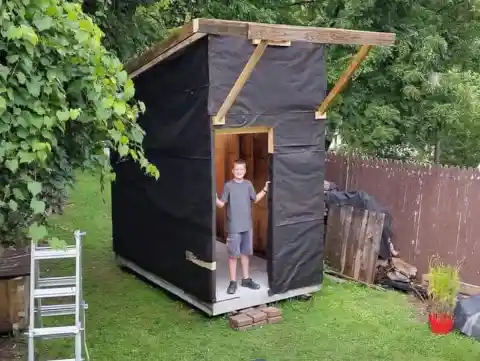
Not only were they on the verge of building a tiny home, but there was vast room for personal growth that Greg wanted Luke to experience–involving everything from the ground up–from structuring to wire installations. Luke had to deal with electricians and different people in this regard on his own.
Luke’s Character Development
In an interview with ABC News, Greg spoke about the project as an opportunity to build Luke’s character, telling them–you are bound to learn new skills when you do things independently–things beyond carpentry. Things that would teach his son intrinsic values like learning to be patient.
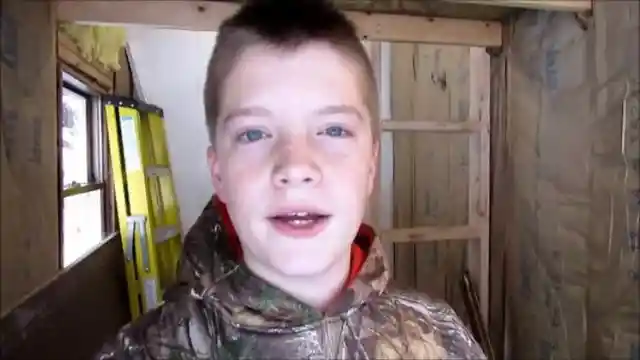
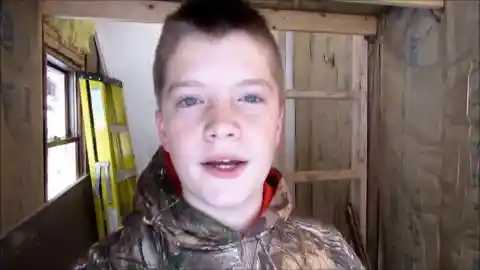
The process would give Luke invaluable life lessons. Throughout the project, he would have to learn to manage his budget, deal with potential disappointments, and correct his mistakes.
Funding The Tiny House Project
When it was time to nail down the specifics of his ideas, Luke needed to snap out of his reverie and face the reality of his goals. It was all good in principle, but to take the first step and take action was a totally different animal.
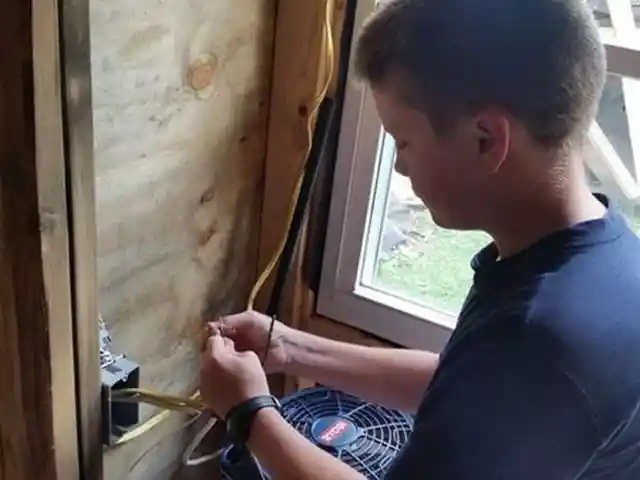

The first challenge he faced was how to fund his project. Without good old money in his hands, this undertaking would remain a pipe dream. So he decided to work for it by doing all sorts of tasks, like mowing the lawn and some cleaning work.
Taking On A Variety Of Tasks
One of the first things Luke learned was the value of hard work. Building this tiny house put a lot of weight on his shoulders. To clinch an exchange deal with his electrician neighbor, Luke offered to tidy up his garage for his free wiring services.
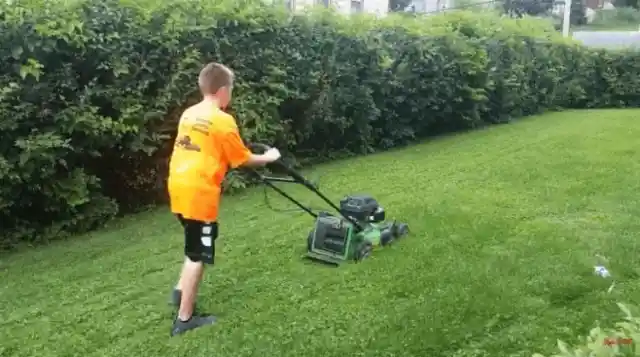
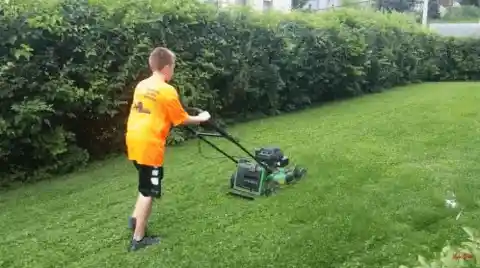
He found other cleaning jobs to raise a few bucks and get him closer to his goal. He cleaned up people’s backyards, emptied trash cans, and offered to be an errand boy, doing anything within his capacity so he could start building his house.
Luke Did His Dad Proud
Surprisingly, the contrast between the sweetness of his dream and the sharp, bitter grains of reality did not put him off. On the contrary, how he worked through various challenges was a source of constant delight to his father, who became duly proud of him.
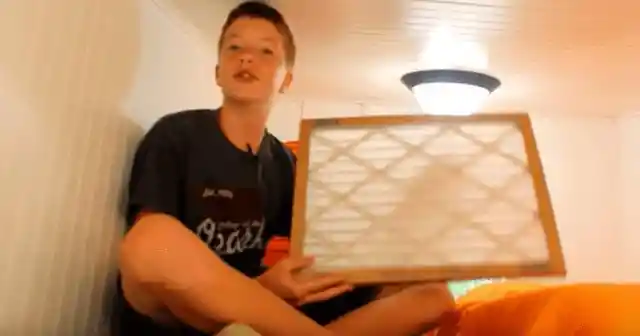
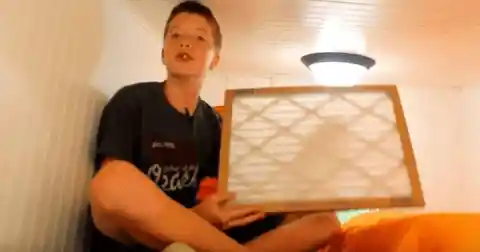
If at first, there were any doubts about Luke’s determination to build his own house, those thoughts had now been decisively laid to rest as he passed every trial with flying colors. Of course, there were times when funds were running critically low, but that only made him grow more persistent. Instead of wallowing in the sorrow of his problems, he became more eager to get things done and adapted to every situation, devising an ingenious solution.
Discovering Minimalist Methods
Because funding for the house was hard to come by sometimes, Luke had learned to appreciate what little he had and tried his hardest to work with it. It was only a matter of time before he discovered the beauty of minimalism.
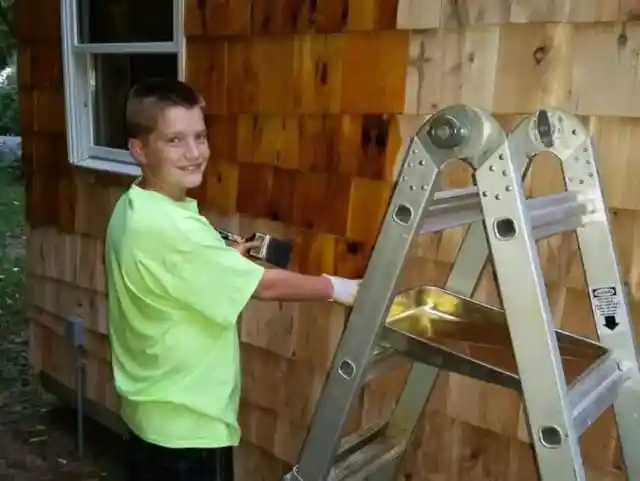
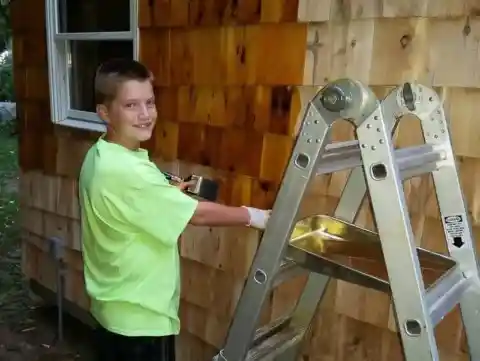
He let go of the idea of pursuing things he didn’t have and focused on what was important. It was all part of his efforts to work within the budget. There was no room for overspending or crafting unnecessary things in such a limited space.
Assistance And Moral Support
Being a minimalist allowed him to save some dough by letting go of the extraneous–it made him focus his energy on his creativity. It made him think a lot, and it was sometimes comical for people around him to watch a kid think so much. This appealed to them and drew their sympathy toward him even more.
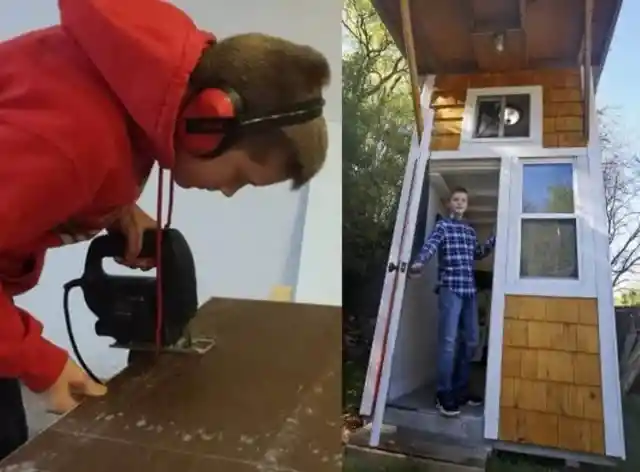
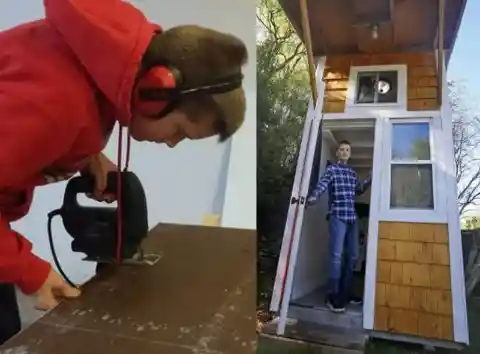
As a result, Luke found himself with an abundance of encouragement. His grandmother offered old sidings for the outer wall that he could use, and one day, his uncle popped up with a recently replaced front door from his buddy.
Environmentally Friendly Housing
While Luke was hustling to construct his tiny abode just outside his parent’s house, a new narrative was starting to sprout about his being the youngest advocate for tiny housing. It was a movement that was growing all over the world, and these houses all had a variety of designs–like New Zealand’s wheeled models called mobile homes.
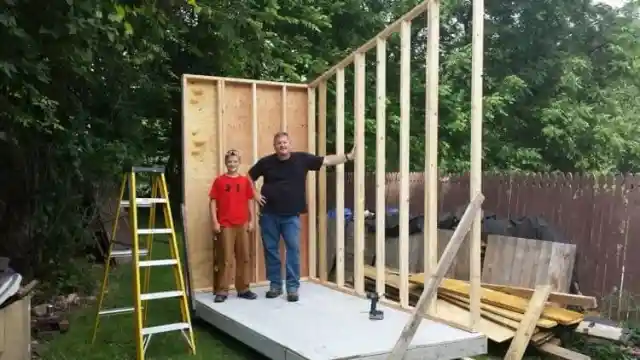
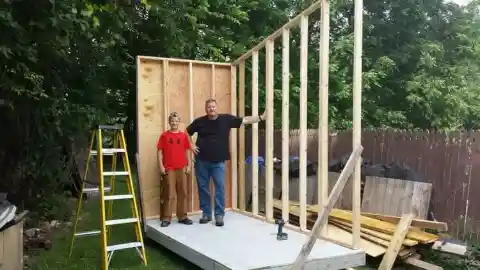
The deviation from traditional houses became popular for its obvious economic advantages. It’s cheaper to build and subsequently maintain. It also offers an alternative lifestyle that uses recycled materials and is therefore environmentally friendly, making life on earth more sustainable.
Teeny Measurements
With the help of his mom and dad, Luke came up with a figure to complete his project. He estimated around $1,200 but targeted $1,500 to allow for a safer margin. Soon he would witness what had only existed in his imagination stretch out tangibly, with a good flooring design his dad helped him with, a partly vinyl siding, and cedar shakes for his roofing.
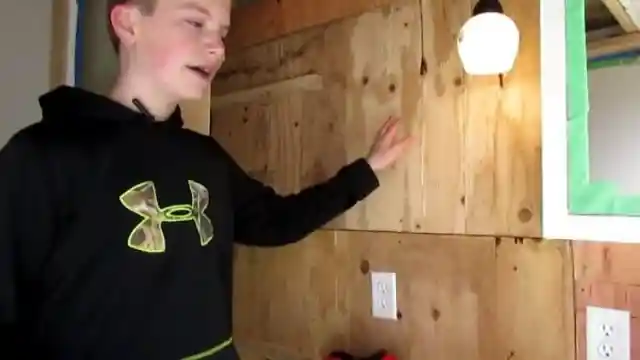
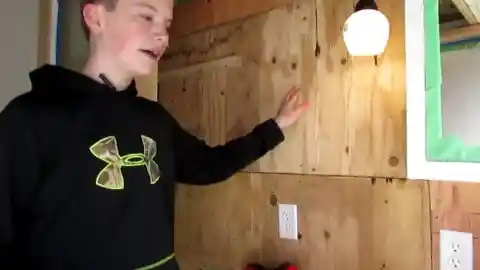
The structure would be ten feet in length, more than five feet in width, and with a height of eight feet. Outside would be a fireplace for Luke to hang out with friends and flowers at the back.
Open House
Luke had many plans for his tiny house and imagined everything he could do with it. And this wasn’t just a spot that symbolized his semi-independence and freedom–he thought of all the good times he would share with his friends there.
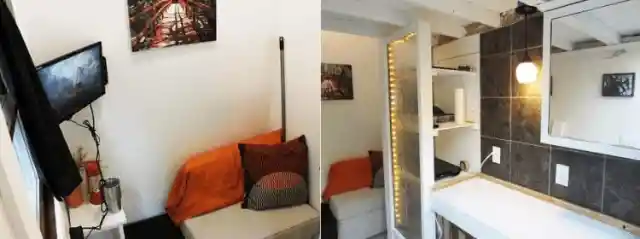
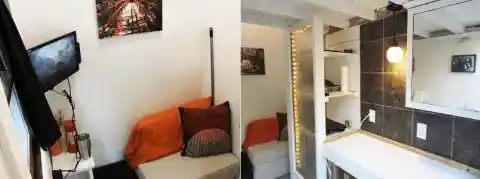
So when the tiny house construction was finally done–a day that seemed light years away when he was just about to embark on his project–Luke invited all his friends to come over and see what he had been up to all summer. To everyone’s surprise, it wasn’t just a playhouse. Instead, it boasted houselike features such as an ottoman in front of a television, a place for cooking and food preparation, and a pull-down table.
Just A Glorified Shed
When asked to comment about his venture, Luke told reporters that this was the start of something big. It was his idea of a starter home. But in his mind, he must have looked up to it as a fort that kept his dreams secure.
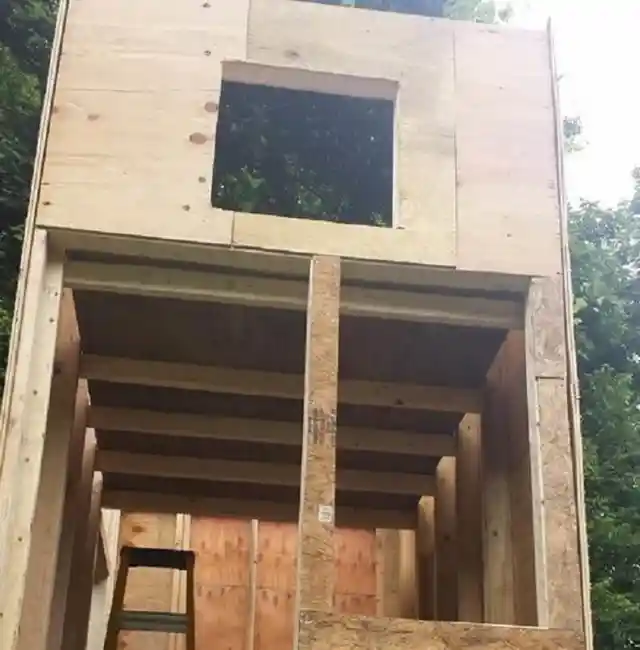
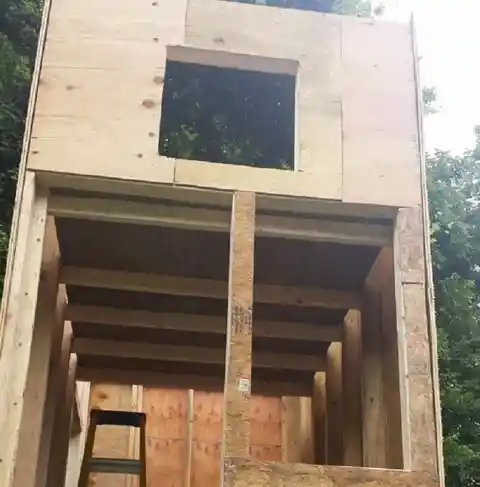
From the point of view of Iowa’s city officials, this starter home wasn’t technically a house by city code standards. Without the necessary plumbing, even with its kitchen and electricity installed–it was just a shed.
Sharing On Social Media
Luke was so proud of what he had achieved that he couldn’t wait to share his story–not only with his friends and family–but also on social media. Still in disbelief about finally completing its construction and being able to do it within his $1,500 budget, he talked about it on the social media platform Youtube.
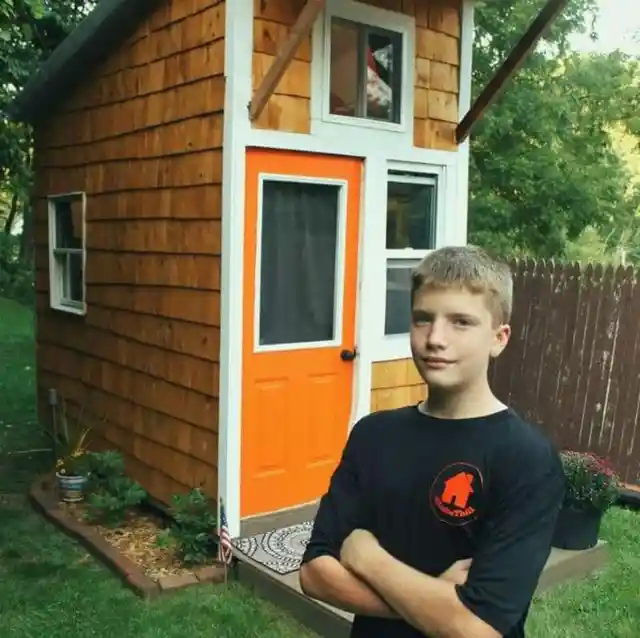
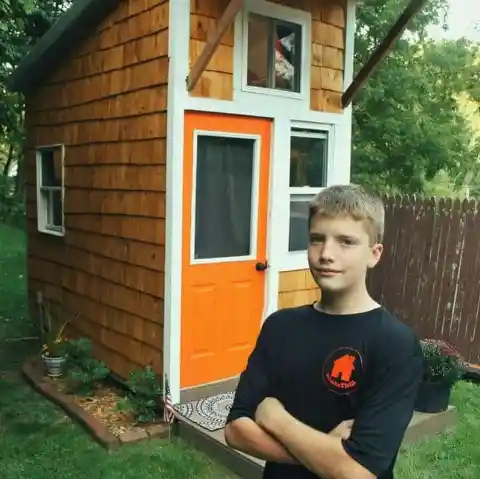
His story was an instant success. It caught viewers' interest, who were all praises for what this kid from Iowa had accomplished almost entirely on his own. Luke’s account drew millions of views.
Exceeding Expectations
As with all major endeavors in life, not all people will believe you can do it. When Luke first shared his idea of building a tiny house in their backyard, some thought the notion was foolish. After all, he was just a thirteen-year-old kid, and what did he possibly know about carpentry? Where would he get the money to start?
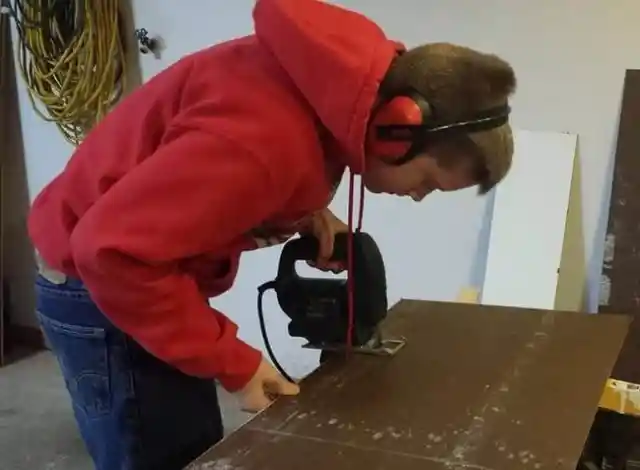
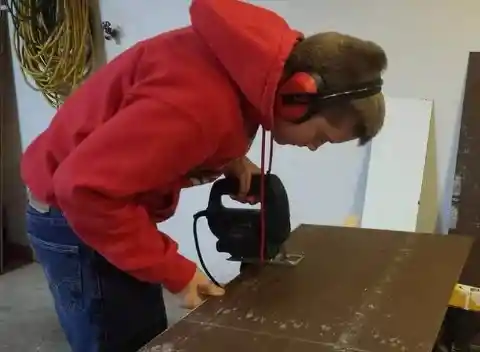
So part of the satisfaction he felt when the tiny house was finally completed was the satisfaction of proving his detractors wrong, stopping short of telling them–I told you so.
Luke Became Famous
There is typically not much going on in a no-name town with a population of only 58,000. It’s a small town where, as one would say, people know each other. Even without the help of social media, many of its residents knew what little Luke was up to.
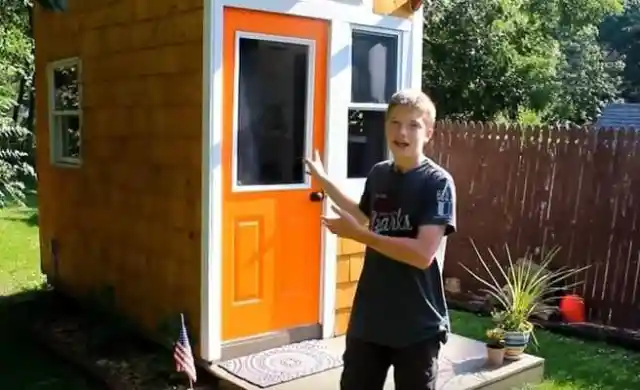
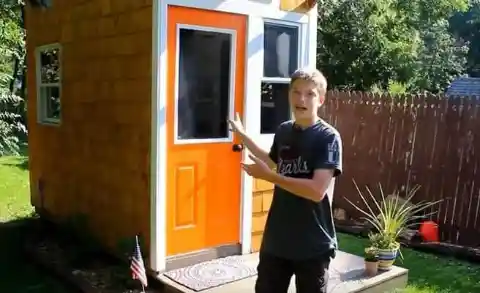
So when he finally completed his micro house, reminiscent of shotgun houses in New Orleans, it reached the news, and people were exceedingly proud of him. Luke had become famous.
Youngest Advocate Of Tiny Housing
While studying how to build his tiny home, searching from one website to another, and playing all sorts of related Youtube channels, Luke Thill noticed that no one younger than him was ever into it. Instead, most of them were adults trying to live a simple life by not having to pay off a massive mortgage for a traditional home and avoiding expendable monthly bills.
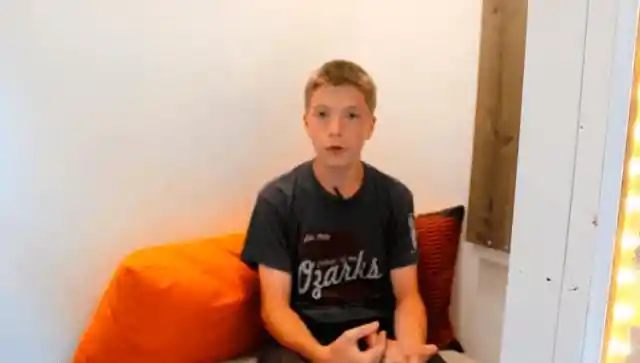
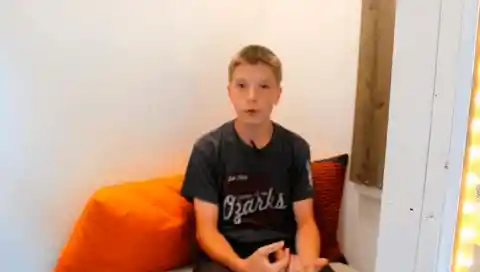
So he came up with the idea of blogging about his whole experience. As the youngest tiny home builder out there, he reckoned people would want to know his thoughts–like what motivated him and how he had dealt with all sorts of challenges that came with the project. He wanted to inspire people.
Inspiring A New Movement
Luke wanted to document his progress because this was an entirely new experience for the young lad. The storyteller in him pushed him to log his thoughts and post about how the project progressed. Little did he know that he was on the verge of opening a door that would usher in an influx of young builders like him.
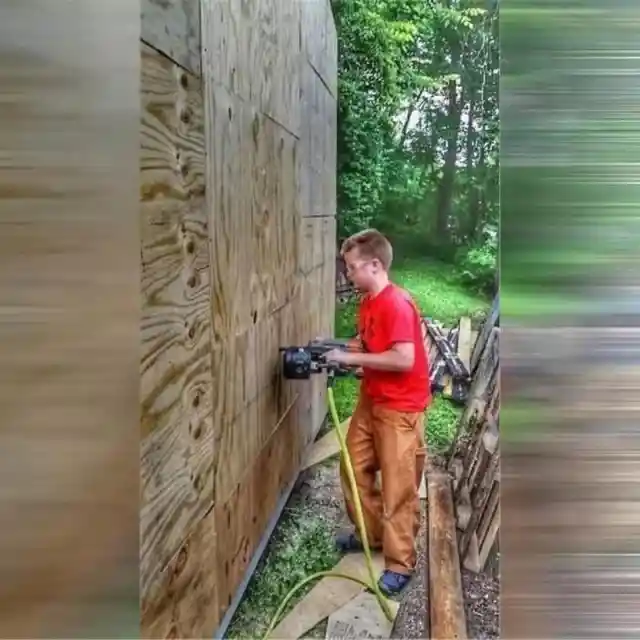
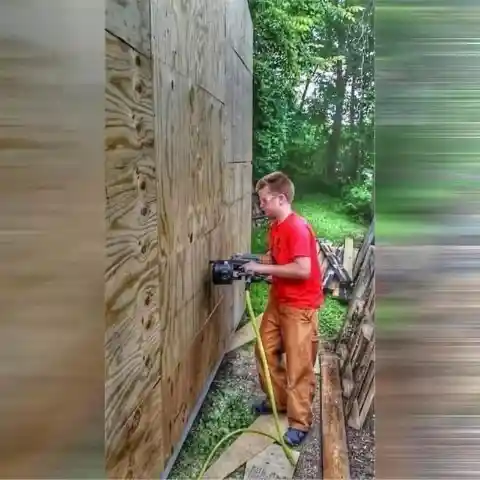
He became a hero to them, in a way. Kids his age suddenly became interested in building tiny homes, and they would message him regularly for inspiration, a few suggestions here and there, showing him pictures of their own micro house concepts.
School Principal Called For A Meeting With Luke
The nuts and bolts of social media algorithms were at work the days and nights since Luke started posting about his tiny house project. While he was too absorbed in his plans, a notification came in from his school principal, who requested an audience with him.
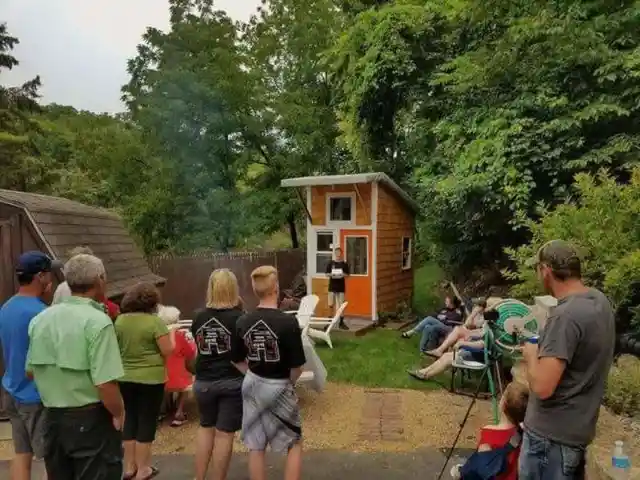
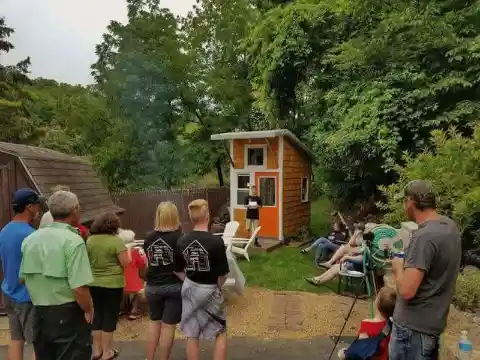
It made the boy a little paranoid, thinking about what wrong he could have done. He wasn’t used to being summoned to the principal’s office, being an obedient student. It turned out that the principal wanted to commend him for his summer project personally. He had turned him into one of his believers among the many young ones and parents he had inspired.
Learning To Overcome Adversity
Whenever Luke beheld the beauty of his small creation, along with his joy came a strong sense of fulfillment. His tiny house was something that had changed him immensely. He has grown wiser, as well as now in possession of new crafting skills.
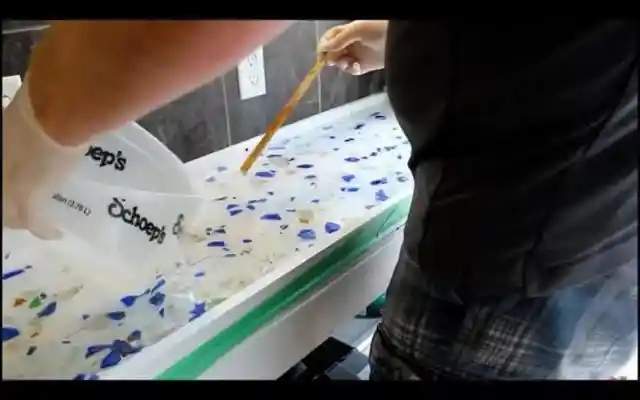
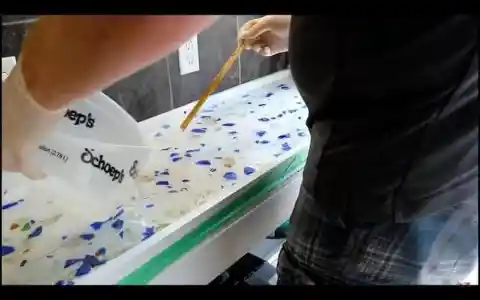
He had become more patient than ever, learning to work through all sorts of situations. He faced a lot of frustrations and still made things work. One example is when he failed in trying to use broken glass art to create his countertop.
Teeny House, Huge Significance
Adults who’ve tried building a tiny house would attest to its many potential stressors. Trying to keep within the budget is just one of those things, but Luke completed his at a low cost with a successful outcome. And he did all these things mainly on his own, albeit with strong moral support from his loved ones.
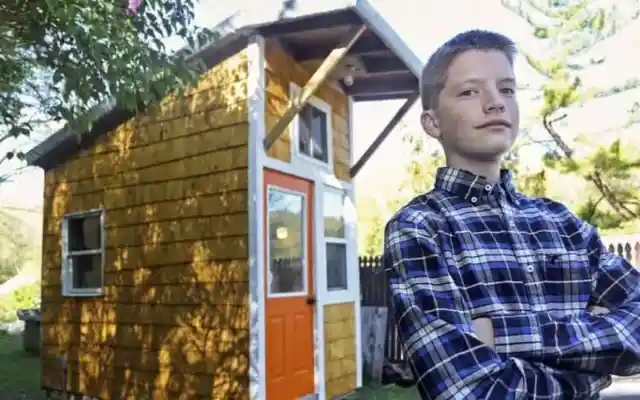
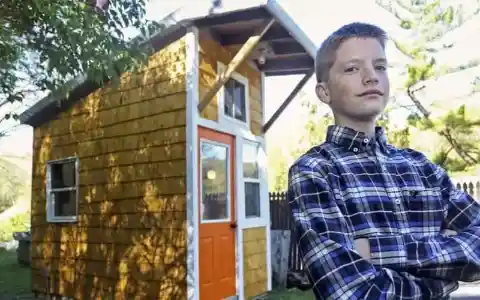
At such a young age, this taught him to be highly determined and not be overcome by his emotions that would only cloud his judgments. Having succeeded at this tiny house project, he now felt he could succeed at almost anything he put his heart and soul into.
A Homey And Adequate Place To Live
It was just big enough! With only the necessities kept inside it–sitting in any corner of the home, you would feel like everything was simply within reach. Luke designed his tiny home to fit his personality, so it has a little playful touch to it–like a mini man cave–with a TV room, bathroom, and still enough space for games with friends.
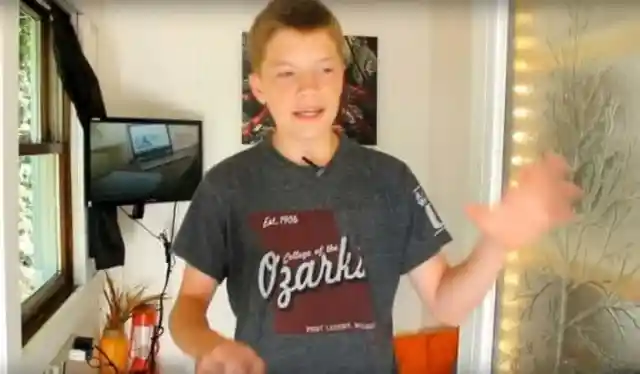
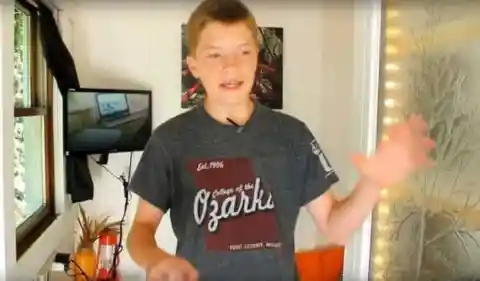
But since the tiny home was constructed in Luke’s family’s backyard, it had no plumbing system. It had electricity, but Luke preferred fresh air over AC. And that way, he could keep the bills down to the minimum.
Luke’s First Meal Inside
This was no playhouse, and that became all the more evident when Luke posted about having his first meal on Youtube. Cooking up a couple of eggs inside this tiny abode garnered a lot of views and comments. And while we assert it was no playhouse–it still had a playful and joyous feel to it.
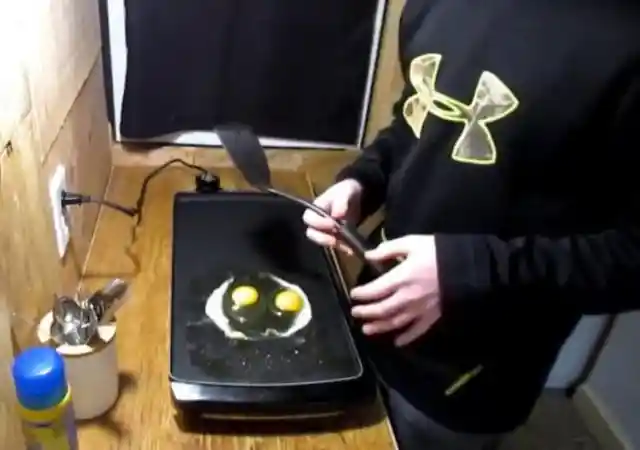
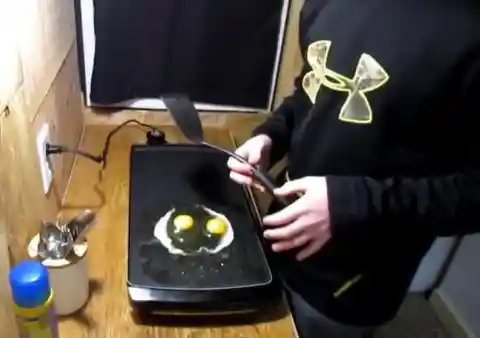
It was like a little game Luke was playing, and people wanted to join in and play too. It invited the richness of a boy’s imagination–living a decluttered lifestyle, living simply with all the freedom in the world, and leaving a minimal environmental footprint.
Invited As A Guest Speaker
Luke went from knowing nothing about building houses to being one of the world's most famous tiny house advocates. It was only a matter of time before his Youtube page would expand exponentially. His creation had produced an online buzz, and people were curious about him–wanting to pick his brain about his whole building experience.
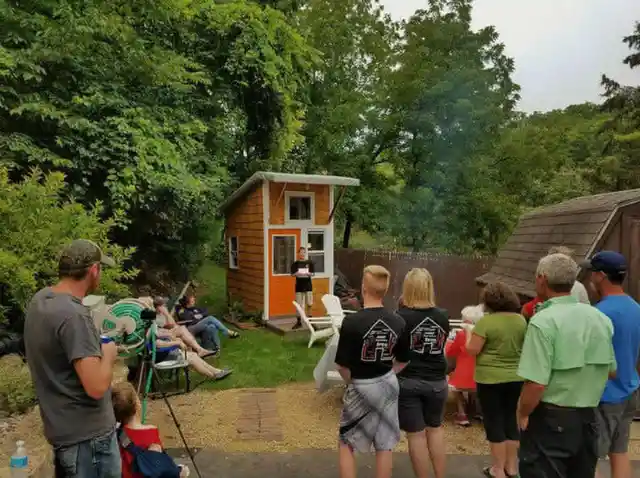
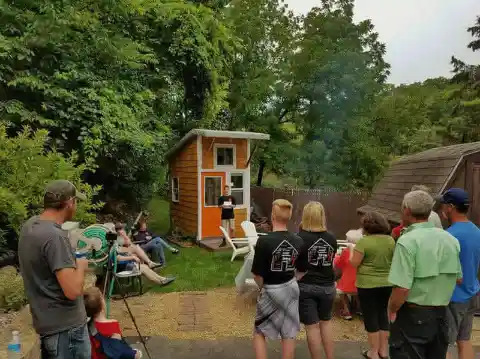
So it was no surprise that someone from TinyFest Midwest–an organization promoting moveable homes for a more flexible life–contacted Luke and asked him to deliver a speech before a group of like-minded people.
Well-Utilized Interior
Luke had surmounted all the challenges of this ambitious enterprise like a one-person army, which made his story all the more interesting to onlookers everywhere. One surprising facet of his finished project was its well-utilized interior design, and he can thank his mom for her input on this.
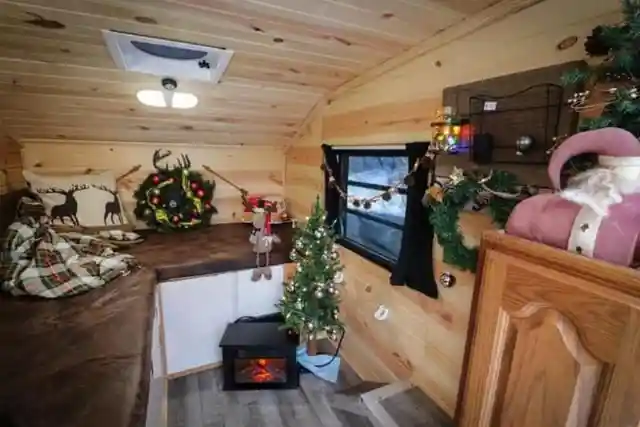
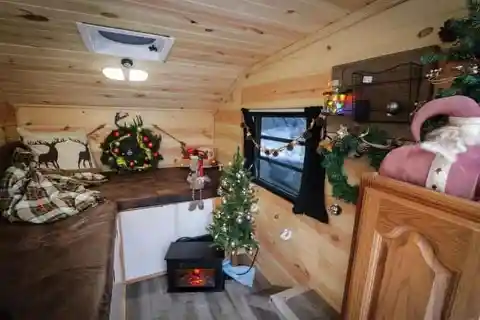
With its scant 89 square-foot space, he was able to partition the area so that no corner was wasted–everything was made to be functional. Features included an electric stovetop and even a medium-sized refrigerator. The kitchen also had a marble countertop, and he partitioned his bedroom to keep away the smoke from cooking.
Little Comfy Space
Although the setup was finalized, Luke had not moved out of his parent’s house–and he had no intention to–because that was never his plan in the first place. Instead, he designed it to be cozy enough for him to spend significant time there.
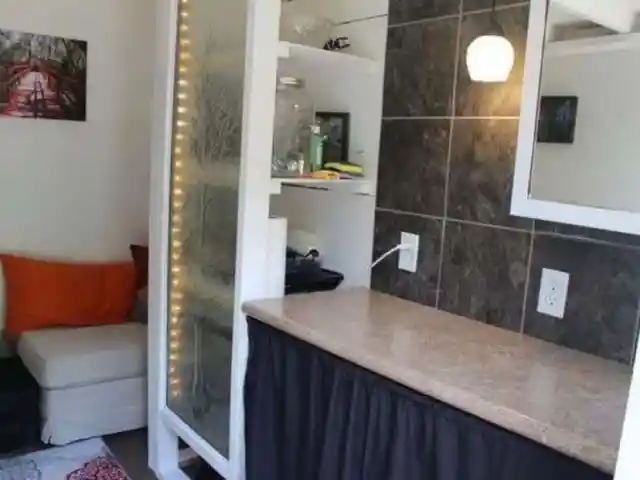
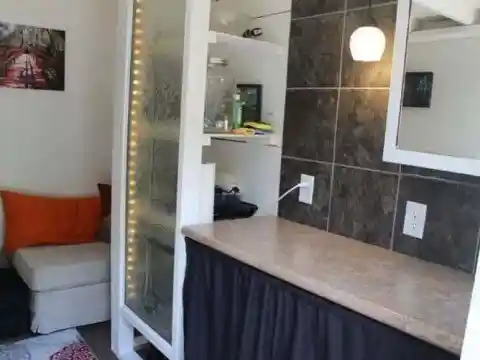
He alternates between his house and sleeping in his tiny home a few days a week. He loves its snug atmosphere, where he can also find privacy and work on his school homework and study. It’s a place that he can retreat to anytime when he wants to be alone.
Fun Place To Hang Around
Climbing a few small steps up the ladder leads to the loft, where Luke can look out the window while reading or sit around and have the radio playing in the background. Whenever his friends come over, they like to gather outside around the bonfire to chat and cook barbecue and marshmallows on a stick.
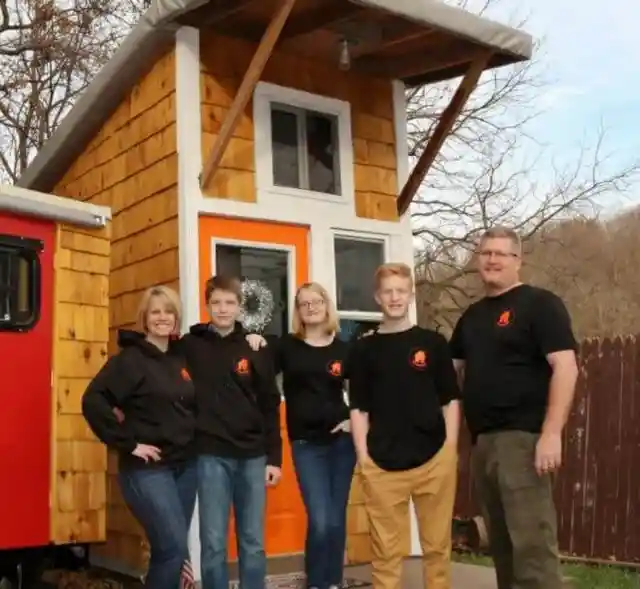
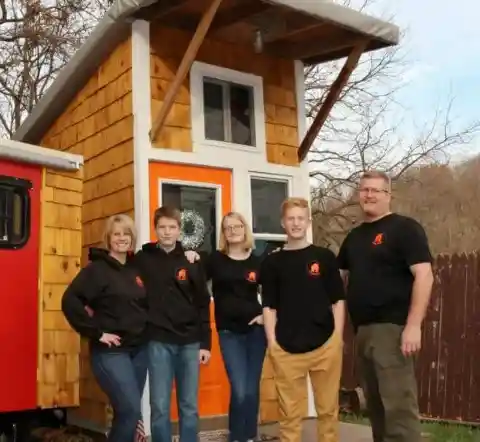
What the tiny house lacks in space, Luke’s parents’ backyard makes up for with its vast lawn. And beyond the fence is more space for eyes and imagination to roam. It has become everyone’s favorite place to hang around and bond–friends, families, and all.
Luke Made The Headlines
The Tiny-house movement has come a long way since architect Sarah Susanka broached the “Not So Big” philosophy. People have learned to appreciate the beauty of smaller houses, deviating from the traditional big houses that also came with huge responsibilities.
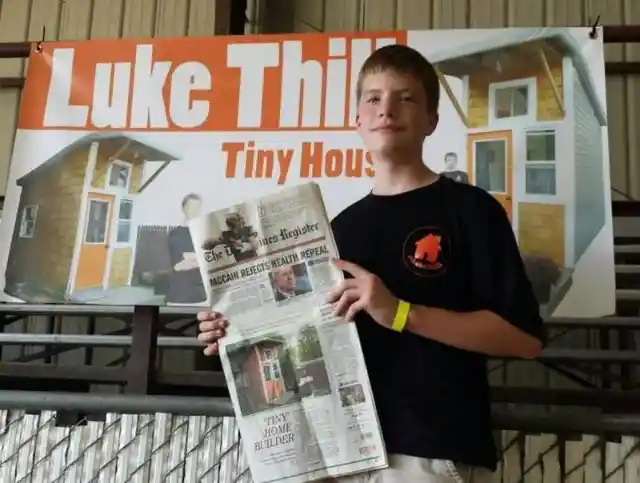
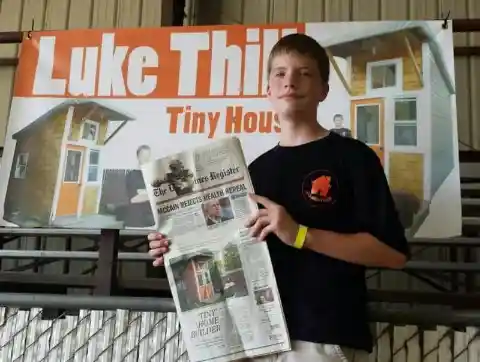
Many popular authors had mentioned the idea even before Susanka, like Henry David Thoreau, in his book Walden which talks heavily about self-reliance. In Luke Thill’s case, he became famous for being the youngest ever to build one and for being so successful on his first try.
Luke’s Interview With Good Morning America
Luke’s success has not only permeated the internet but also made the headlines of the Telegraph Herald and the Des Moines Register. His story was now in general circulation. At first, he couldn’t believe it when he saw a picture of his creation in the newspaper.
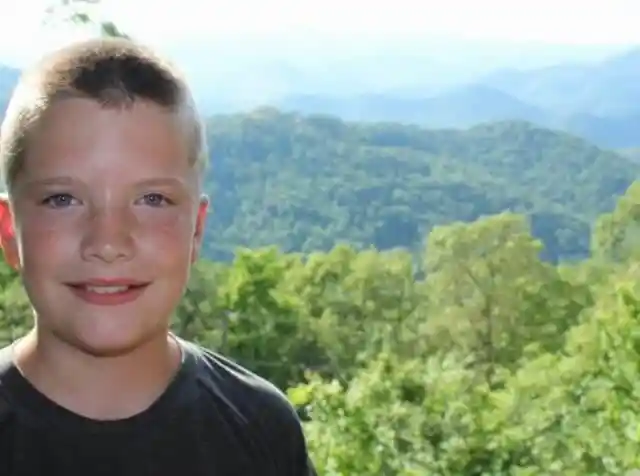
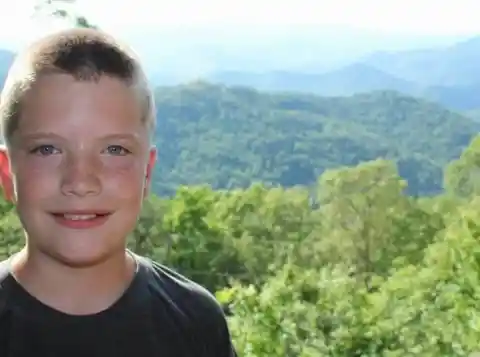
But that was just the start. His story piqued the interest of Good Morning America, and his parents were contacted by its representatives, who asked for a chance to interview Luke.
Derek Diedricksen Reaches Out To Luke Thill
Derek Diedricksen is the author of Microshelters, among many other books related to tiny home building. He has been featured on television frequently and his designs–known for their efficacious maximizing of little spaces–opened Luke’s eyes to this new world of all small things.
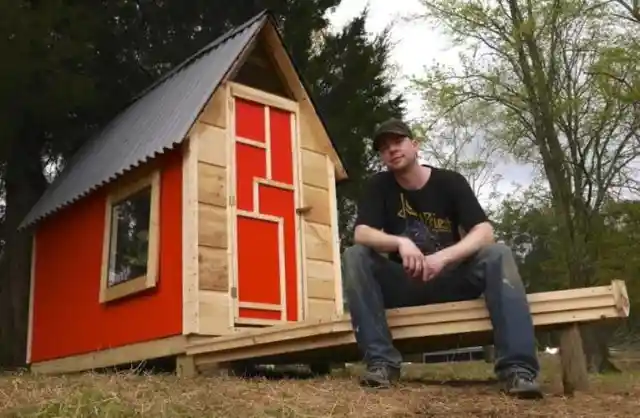
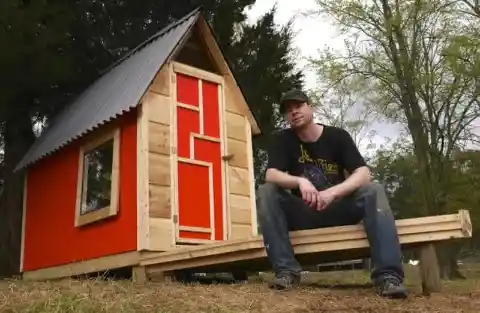
So it meant a lot to him when, after all the interviews, guest speaking invitations, and making it to the news headlines–Derek himself reached out to him. He gave Luke even more inspiration and encouragement and possibly some design suggestions that could be used in the future.
Twin Brother Takes After Luke
Before the paper and other news channels broke the story about Luke’s tiny home success, inspiring many among the youth to embark on their own building adventure, the first person to be inspired was Cole–Luke’s twin brother.
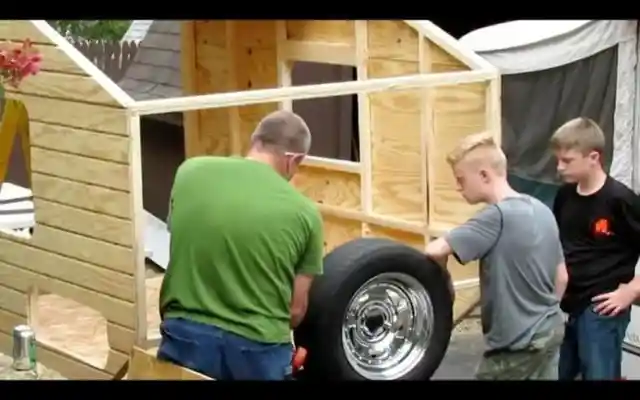
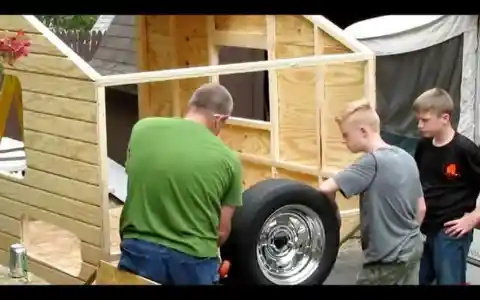
After the small home was built–which took Luke a year to do–Cole started to build his own teardrop trailer. It would be the perfect size for the two brothers, and like the tiny house, he used recycled materials to build it.
Strong Following
When the twins followed up the tiny home project by building a new trailer, their subscriber growth increased steadily. Before the end of 2019, their Youtube channel had already reached the 65k mark.
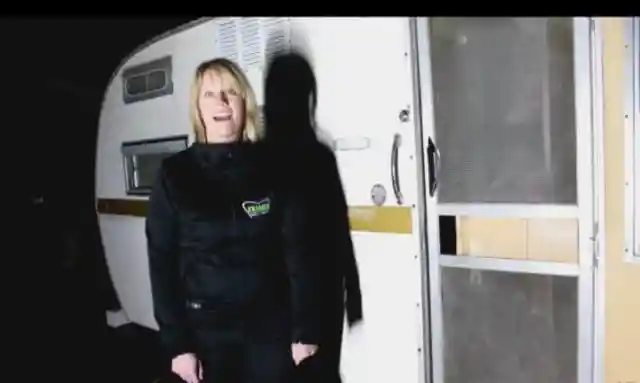
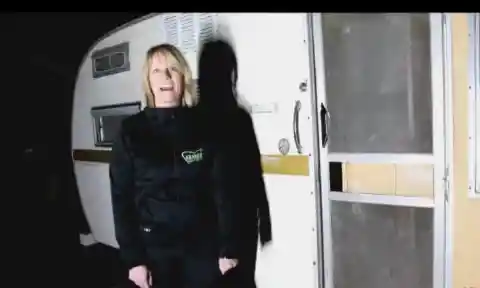
Their audience would visit their channel regularly to check on their adventures. So far, they’ve taken their teardrop camper on fifty trips across the country. Building has become the family’s way of bonding, and they’ve posted content about their mom renovating a 1972 trailer which adds to the variety of their videos.
Luke Loves His Privacy
Luke and Cole worked on the camper closely together, eventually completing it with a $2,500 budget. They’ve used it to go on trips together, which has sparked more interest in the outdoors among teens like them. But sometimes, Luke finds himself needing some personal space.
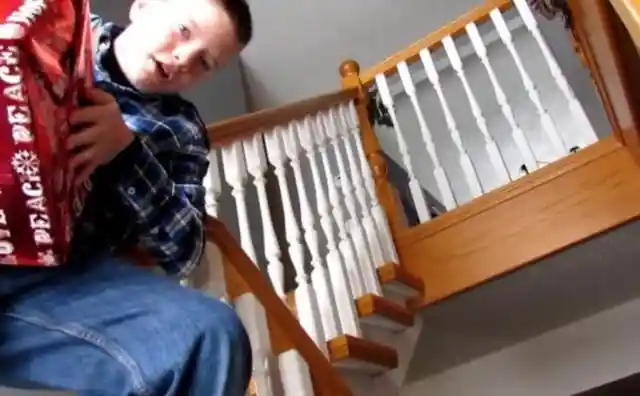
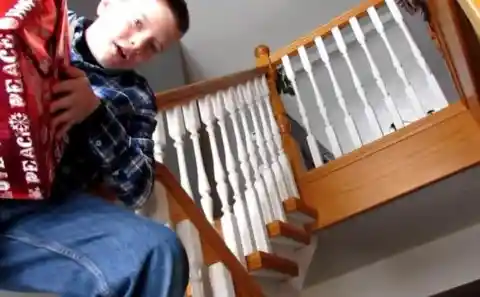
So he retreats to the backyard and into his tiny home–the project that started their adventures together as a family. This humble abode remains his first love. It’s a perfect spot for him to rest from a long trip or dream and just be himself.
Expenses For The House
One of the things that Luke did well was to work strictly within his budget, and he got help from his dad. Budget is one of the things that people want to talk to him about because they wonder how a boy his age learned all that financial discipline.
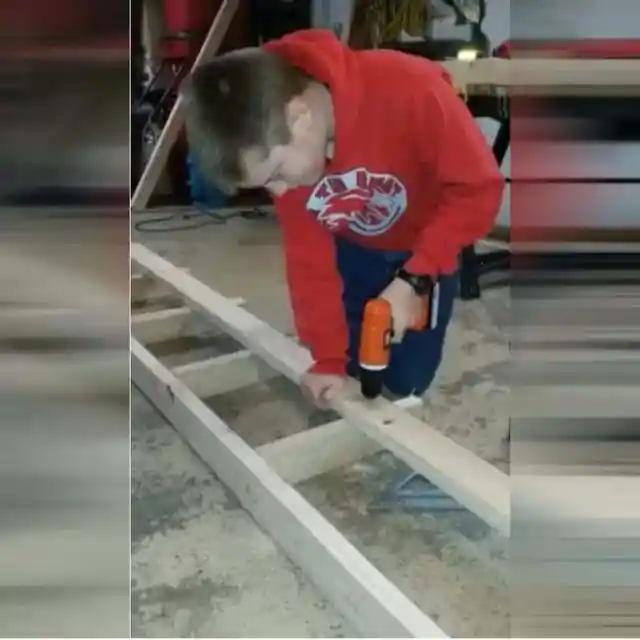
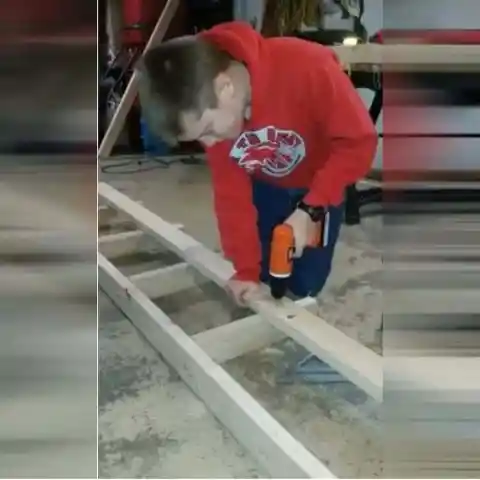
One who greatly benefited from his building experience was his twin brother, Cole–as they also worked on the camper with budgetary constraints. They were both quoted as saying that the money they spent together on the project was worth every penny.
Inspiring Young Builders
Before Luke started building his house, nailing every piece of wood as if it were pulled right out of a figment of his imagination, he used to be bored during the summertime. His message now is that teens aren’t too young to build things.
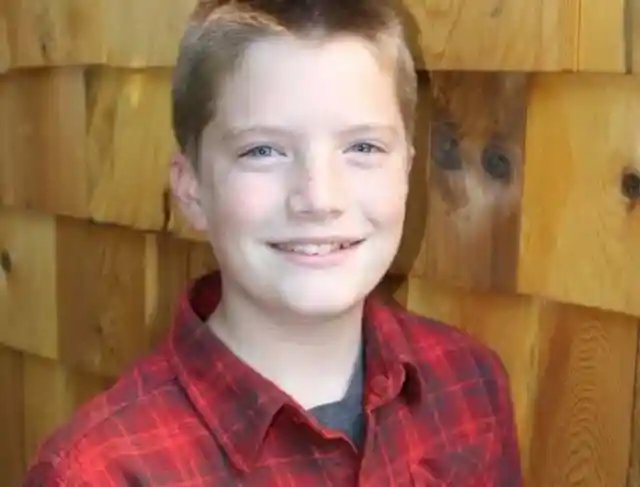
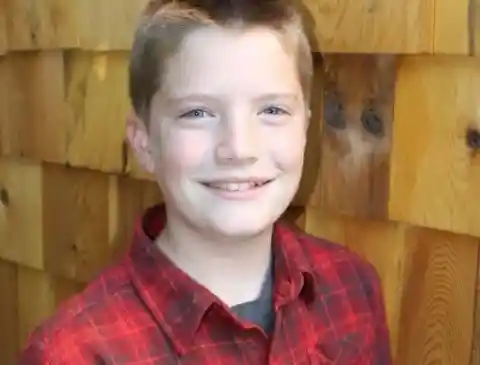
Getting hooked on computers or mobile phones isn’t the only option for kids during their free time–especially during long school vacations. Instead, kids can start learning to work on something tangible instead of being limited to the virtual sphere.
Just A First Step Towards Something Bigger
The tiny home Luke built is not the end game of his goal–it’s just a first step towards bigger things. More important than the structure itself are the lessons he has learned along the way–building skills and life lessons. Soon he shall use all these advantages to expand his horizons.
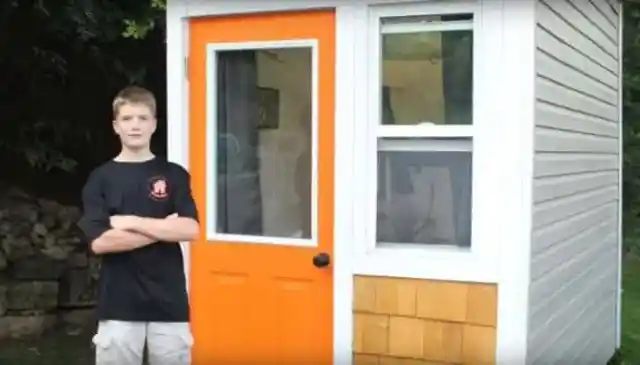
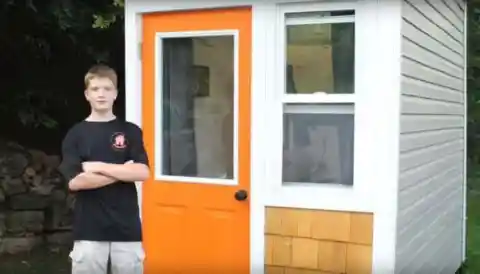
This may mean physically expanding his “starter home,” and if so, could it be possible that he would turn his small structure into an outbuilding or a bigger house? Would he be traveling to help people build their own small homes? Whatever his plans might be, it’s clear that his tiny house is just a small step necessary before making that big leap.
Young Entrepreneur
Whatever Luke’s plans will be in the future, he will be ready and better equipped for it experience-wise, as well as financially. In fact, he’s now designing his own shirts and has launched his line of merchandise to fund his upcoming ventures.
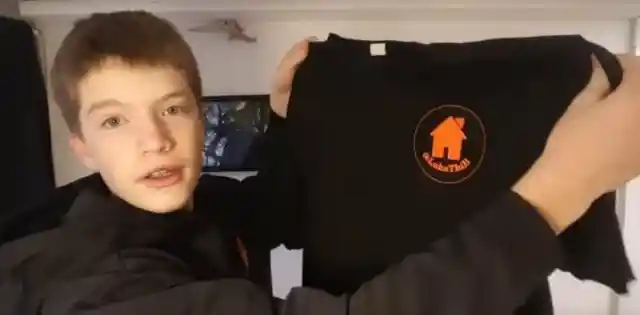
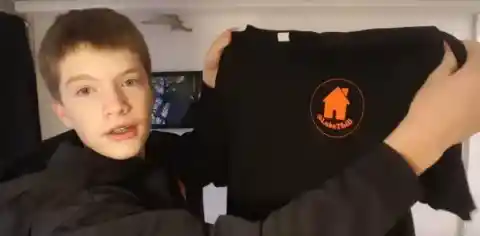
At such a young age, he has become a tiny house builder, a local celebrity, and recently a young and promising entrepreneur in just over a year. The sky's the limit for Luke, but all his success started with the decision to make that first step and the commitment to follow through with it.